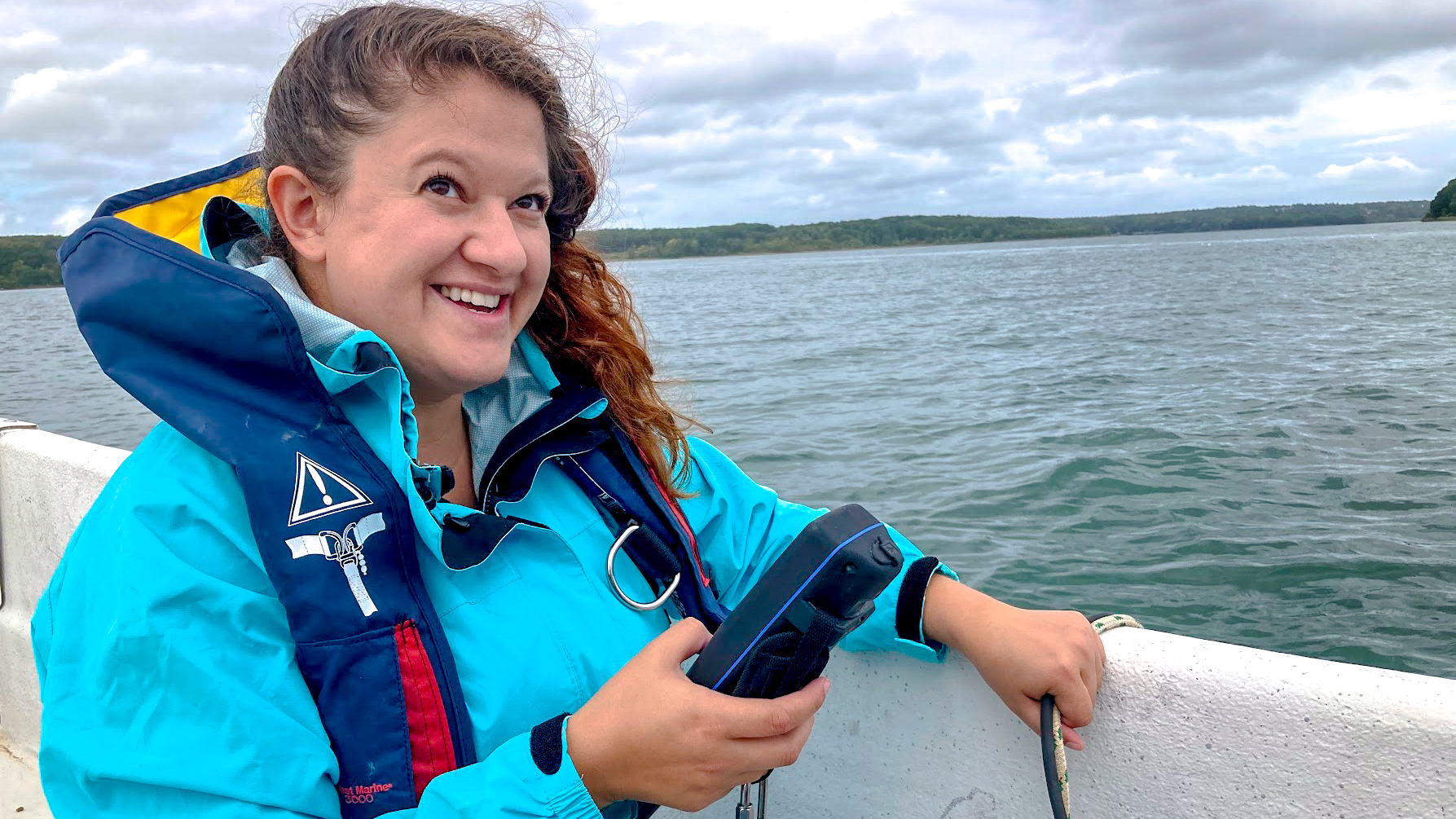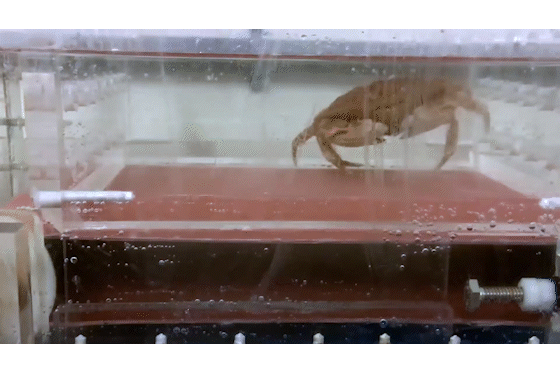
Understanding invasive species’ incursions into the Gulf of Maine
By Ryan Abedi and Lauren Crofton-Macdonald,
As the Gulf of Maine warms, new species, invasive and not, are moving in. The delimitation between invasive and noninvasive species can be difficult to discern. At a simple level, it can be the level of human involvement in the species movement. For example, the European green crab made its way via ship from coastal Europe and North Africa to the Gulf of Maine, where they tear up eelgrass beds, posing a threat to the species that rely on them. Contrary to this is the blue crab which while new to the Gulf of Maine is native to the United States’ eastern coast. This species began migrating northwards into Maine as the Gulf of Maine and surrounding waters warmed rapidly.
As a member of the National Science Foundation EPSCoR RII Track-1 Maine-eDNA project, recent doctoral graduate Emily Lancaster set out to determine the temperature ranges where these organisms of interest thrive. Based at the University of New England (UNE), and advised by Markus Frederich (UNE, professor of Marine Sciences) and Damian Brady (University of Maine, Agatha B. Darling professor of oceanography), Lancaster explored the physiology, specifically thermal tolerance of both the European green crab and the Asian shore crab, as well as the development of environmental DNA (eDNA) detection technology for nine species of interest in the region. Using eDNA, the genetic material shed by an organism in the environment, helps researchers like Lancaster detect species without having to physically see them.
The research began by testing the two crabs’ biological limits such as their heart rates within the maximum and minimum temperatures that these crabs can survive. Through these experiments, Lancaster found evidence that might be contributing to both species’ adaptation to the temperatures here in the Gulf of Maine. She discovered that the crabs shift the temperatures that they thrive at down in the wintertime so that they’re able to be a bit more flexible with their physiology. Using this information, Lancaster was able to determine each species’ ability to thrive in Maine’s coastal waters. “To thrive in this context is to reproduce, grow, and go about their daily activity,” explained Lancaster.
Invasive species like these can be highly destructive to Maine’s ecosystems and fisheries economy. The Asian shore crab is an opportunistic omnivore and feeds on just about anything it can get its claws on, including other crabs, posing a threat to native species. Early detection is crucial for eradication, containment, or long-term management of an invasive species. Lancaster’s work lays the groundwork for future investigation into the spread of invasive species, their adaptation to new environments, and their impact on the surrounding ecosystem. Studying the temperature ranges at which an invasive species can thrive, researchers like Lancaster could predict who will arrive in Maine next.
In addition to her work with crabs, Lancaster investigated the use of eDNA tools to detect nine species of interest. Lancaster found that eDNA detection tools for invertebrates must be carefully validated in the laboratory before deploying them in the field. These invertebrates could be divided along a textural line. Lancaster split them into two groups, squishy and crunchy. The squishy species, with little to no exoskeleton and exposed flesh, could generally be detected using eDNA data. The crunchy species, with harder exoskeletons and little to no exposed flesh, were in contrast far less detectable using eDNA. Researchers have long understood eDNA as a tool that in tandem with other methods can be incredibly powerful for species detection. Her work with invertebrates helps make researchers’ understanding of that more robust as they try to understand the plethora of new and existing species moving in and out of the Gulf of Maine.
Lancaster defended her dissertation on May 15, 2024 and is the most recent Maine-eDNA graduate student to achieve this, with more successful defenses expected in Maine-eDNA’s final months. During her tenure with Maine-eDNA, Lancaster became increasingly involved in the program’s outreach mission in addition to her research, teaching courses at Southern Maine Community College and UNE as well as leading and participating in a number of K-12 STEM experiences. This fall, Lancaster will begin her post Maine-eDNA career at Eckerd College in Florida, teaching invertebrate zoology and starting her own eDNA lab.

